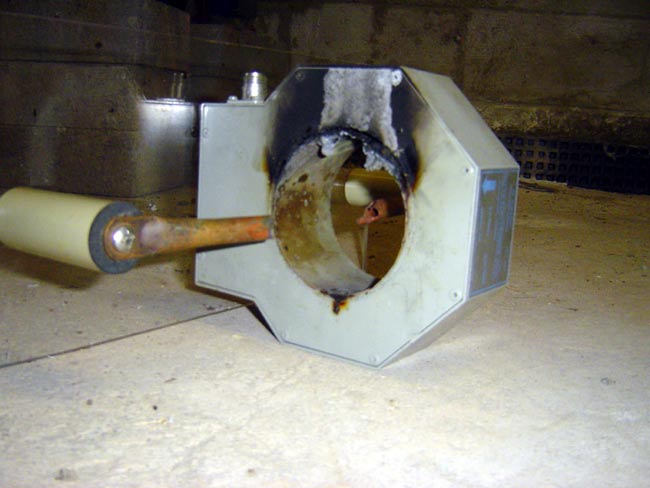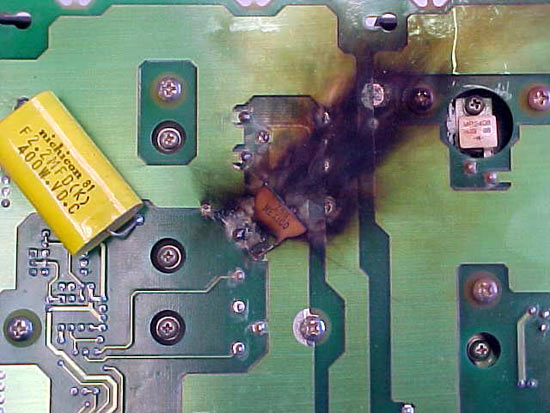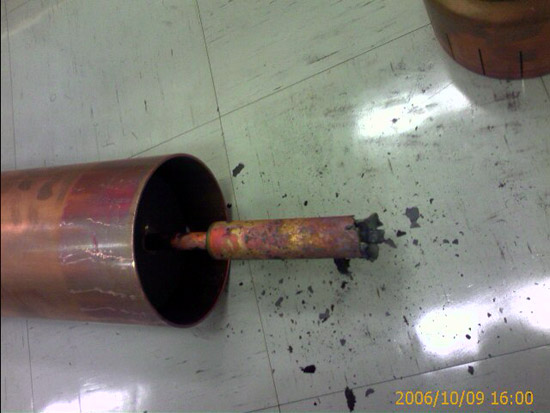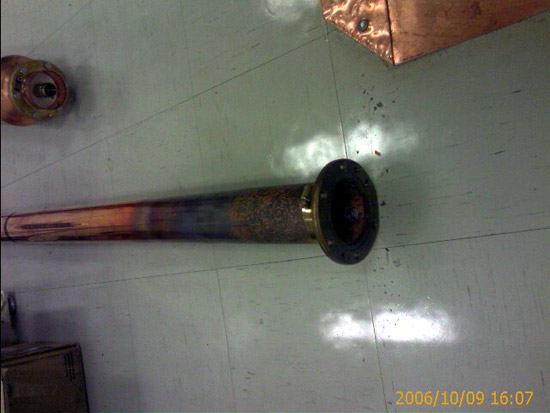Another example from my blown-up shit collection, artifacts division:

This is a Delta TCT-1HV current sample toroid that was pretty well destroyed during a thunderstorm. I mounted it on a piece of plexiglass because I think it looks cool. This unit was installed at the base of the WGY transmitting tower. One June evening, I received a call from the station operator (back when they had live operators) that the air signal sounded kind of “funny.” So I turned on the radio and sure enough, if one thinks a radio station that sounds like a motorboat is funny, then, why yes indeed, it did sound funny.
Since I only lived a few miles away from the site, I jumped in the trusty truck and headed over. Upon arrival, I found the MW50B on the air at full power, with the carrier power swinging wildly from 20-90 KW with modulation. Hmmmm, bad power supply? Turned the transmitter off and tried to place the backup transmitter on the air. Now the old Gates BC5P had never been super reliable in the first place, but it was odd that it would not even run at all.
Then I had a hunch, let’s walk out to the tower I said to my assistant who had shown up to help. When we got to the ATU building it was filled with blue smoke. Ah ha! Somebody let the magic smoke out of one of the components! I was expecting a capacitor blown in half but was surprised to find the copper tubing that connected the ATU to the tower melted in half. Lightning must have caused an arc between the tubing and the toroid and for some reason, the transmitter kept on running while it was arcing. The copper tubing in the picture with the toroid is only missing about six inches, the way the system was mounted at the tower base, fourteen inches of copper tubing was missing, or rather melted into a puddle on the bottom of the ATU.
I quickly found another piece of 1/2-inch copper, cut it to length, flattened out the ends with a hammer, and drilled mounting holes. Luckily I was able to get everything back in order quickly and the station returned to the air about an hour or so after it went off.
Everything has a cause. Investigation showed that the VSWR circuit on the MW50 had been disconnected from the directional coupler. The lead was un-soldered and taped off, so it was quite intentional. I spoke briefly with two of the three prior engineers that had serviced the MW50 over the years, they both blamed the other one. I surmise this; The WGY tower was prone to lightning strikes because of its height. Even if the tower was not directly struck by lightning, oftentimes the guy wires would arc across the insulators, causing the MW50 to momentarily interrupt the PDM signal and drop the carrier for about a second. Some programming people at the station did not like this, it sounded bad on the air, so one of those guys undid the VSWR circuit, and voila! No more momentary outages during a thunderstorm! Brilliant! Except for the 60-90 minute outage one night…
Sometimes it is better to tell the program directors that their idea is not good, then move on.



